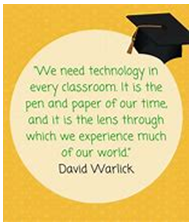Computing

Statement of Curriculum Intent
Our children are living in a world surrounded by devices, and technology is changing the lives of everyone. Computing within schools can therefore provide a wealth of learning opportunities and transferrable skills within our Computing lessons and across other curriculum subjects. Through the study of Computing, children will be able to develop a wide range of fundamental skills, knowledge and understanding that will prepare them for their learning journey and equip them for the rest of their lives. Children need to be taught ‘Computational Thinking’ in order to provide them with essential knowledge that will enable them to participate effectively and safely in the digital world beyond our gates.
Curriculum Implementation
At BCF our computing curriculum is taught from EYFS throughout KS1 and KS2, following our computing progression of skills.
In Early Years, computing is planned and taught through adult directed teaching as well as being part of enhanced and continuous provision. Children learn how to use a variety of apps on our iPads and to log in to Purple Mash. They learn to follow and give instructions using Bee-Bots. They have frequent e-safety lessons, which are taught through stories and songs to make the key messages memorable.
In Key Stages 1&2 we deliver the Computing National Curriculum through the Teach Computing scheme of learning. Computing is organised into the three core strands outlined in the National Curriculum: Computational Thinking, Digital Literacy and Information Technology - each being as vital as each other to create a well-rounded curriculum.
-
Digital literacy addresses the use of technology in an ever-increasing technological world. This predominantly focuses on E-Safety and supports children making safe decisions when online as well as recognising how easily technology seeps into their lives. Not only are we teaching users to utilise technology safely but also to consider the impact it has on their self-worth.
-
Comparatively, computer science utilises the PRIMM method: Predict, Run, Investigate, Modify and Make. This method not only encourages children to be curious about how and why programmes work but also encourage them to be creative. Furthermore, this method will enable children to be confident that they can understand and communicate in the very specific language of computer science.
-
Finally, information technology allows children to operate systems and programmes. At BCF, we focus on those we expect children to access in the greater world once they leave school, ensuring they are confident and efficient users.
Computational Thinking, or computer science, teaches children how to create and debug simple programs and introduces the language of computer science.
Digital Literacy teaches the children the ability to creatively and critically use digital tools and technology to express, research, communicate, collaborate and share in a safe way. We teach online safety as an explicit part of our curriculum through computing and PSHE and use the resources of Project Evolve to ensure we are delivering a consistent message.
Information Technology is taught both discreetly, and used to enhance other areas of the curriculum. Our children use technology purposefully to create, organise, store, manipulate, retrieve and send digital content, they use both iPads and Chromebooks to support their learning.
Curriculum Impact
With the implementation of our computing curriculum, children at BCF will be digitally literate and able to join the rest of the world on its digital platform. They will be equipped to use technology safely and effectively. The biggest impact we want for our children is that they understand the consequences of using the Internet and that they are aware of how to keep themselves safe online.
A non-negotiable throughout the computing curriculum is the use of language. The children are given the correct and technical language and teachers are expected to utilise and model this throughout their teaching. Using the language of computing enables children to not only be more confident users but it gives them the tools for thriving in our technological world.
It is our hope that by the end of their time at BCF, not only are our children confident and safe users of technology, they are inspired by what they could achieve in the world of STEM.
Our advice and guidance on E-Safety can be found in our policy on the safeguarding page.
Long Term Overview



